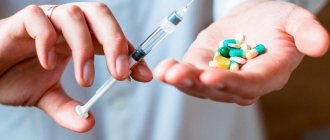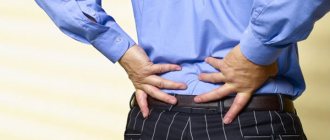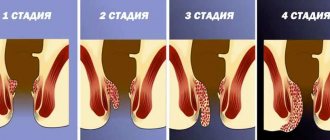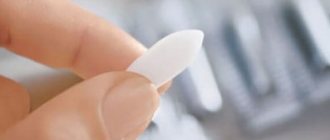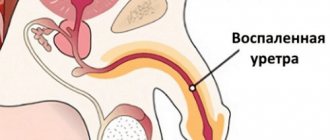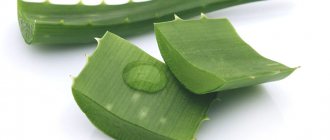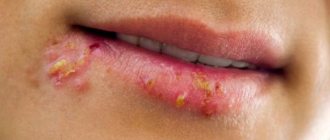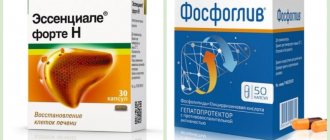The name of the problem - ingrown toenails - causes confusion among many. Indeed, such an insignificant part of the human body is the nail, what kind of trouble can it cause? Those who are familiar with the unpleasant phenomenon firsthand understandably sympathize with the “newcomer” of the problem, because they know that an ingrown nail can put a person out of work for a long time. Those who have never encountered such a problem should also pay close attention to its prevention, because no one is immune from such a fate.
Photo from the site: persona-krasnodar.ru
“The Ideal Manicure” will describe the issue in detail and tell you what to do with an ingrown toenail.
Causes
Inaccurate nail trimming is the main cause of onychocryptosis . But there are other factors. These include:
- fungal diseases in which the nail plates are deformed;
- tight shoes;
- deformation of the finger joints or feet;
- impaired blood circulation;
- genetic characteristics;
- swelling in the feet;
- excess weight;
- neglect of hygiene;
- injuries;
- diabetes.
It is possible to treat an ingrown toenail at home if it has penetrated shallowly into the tissue, there is no infection with pus discharge, and pain occurs when walking and wearing shoes.
Symptoms
Treatment of ingrown toenails begins after the cause of the defect has been established and the symptoms of the disease have been dealt with. When ingrown nail plates appear, the following signs appear:
- at the site of ingrowth, the skin turns red and swells;
- severe pain appears when palpating and moving;
- exudate and pus form in the lesion;
- an abscess occurs, it leads to an increase in skin temperature and an increase in pain;
- the nail thickens, flakes, and loses its shine.
When onychocryptosis becomes chronic, the finger becomes deformed and the periungual fold is injured. The soft tissues in the affected area grow. The plate cuts into the deep layers of the epithelium.
Ingrown toenail
Toenails can grow in on different toes, but most often it occurs on the big toe. Experts identify among the causes a genetic predisposition that affects the size and shape of the fingers, the size of the nail plate and its relationship with surrounding tissues. Statistics show that often the problem of ingrown nails occurs in several members of the same family, although it may appear at different times.
In general, the causes of ingrown toenails on the big toe are similar to those mentioned above, but some of them dominate over others:
- wearing high-heeled shoes with narrow toes;
- improper cutting of nails, namely cutting out corners;
- transverse flatfoot;
- wide thumbs and convex nails;
- fungal infection, frostbite, injury.
Doctors have to deal with other causes of ingrown toenails, but these are the most common. When ingrown, pus often forms under the corners of the nails - this indicates that the disorder is neglected. The danger is that the inflammatory process may begin to occur in bone tissue - osteomyelitis.
If you do not get rid of an ingrown toenail in a timely manner, it can lead to gangrene, requiring amputation. To avoid dire consequences, contact a specialist in a timely manner rather than self-medicate. It only helps with mild forms of the disorder.
Stages
If onychocryptosis is not treated, it will go through several stages of development. The problem of what to do when a nail has grown into a toe is solved depending on the severity of the condition:
- In the first stage, the patient suffers from pain, inflammation and swelling. The defect can be corrected at home, following the doctor’s recommendations.
- At the second stage, the plate violates the integrity of the skin, and the damage becomes infected. Blood oozes from the wound and purulent exudate comes out.
- When treatment is not carried out, the plate thickens, loses its correct shape, and the epithelial tissue grows. At the third stage, only surgery can help get rid of onychocryptosis.
In patients with diabetes mellitus or other pathologies, dangerous complications arise:
- osteomyelitis;
- gangrene.
10
Radical treatment
An advanced case cannot be cured in the usual home conditions. The nail plate must be removed. For this purpose, a suitable surgical method is used:
- The nail is excised completely or partially under local anesthesia. At the same time, the overgrown tissue is removed.
- The defect is removed using a minimally invasive technique. Damaged tissue is excised using a radio wave knife.
- A laser is used to remove ingrown toenails. The beam removes injured tissue and the growth area of the nail plate. After such an operation, onychocryptosis does not occur again.
Patients who have undergone surgery are prescribed:
- painkillers;
- local anti-inflammatory drugs in the form of ointments and gels (bandages are made with them).
Gentle treatment and pain relief
There are different ways to treat onychocryptosis, in which nails grow into the skin of the fingers. In the initial stages, gentle methods aimed at relieving inflammation and relieving pain help. Official medicine offers the following treatment options:
- Laser correction. The procedure is carried out under local anesthesia and lasts no more than 15 minutes. Specialists apply a targeted effect on the nails without destroying their integrity. Damaged skin is literally vaporized and cauterized, while healthy tissue is not affected. Subsequently, the nail bed is soldered to avoid relapse.
- Springs and staples. Special devices in the form of staples and springs are put on the nails, which unbend the deformed surface. They work similar to dental braces. They are practically invisible on the nails and do not interfere with wearing usual shoes. Staples provide a significant effect, minimizing compression of the skin fold and eliminating pain. Also, with their help, specialists correct the direction of growth of the nail plate.
- Phenol therapy. The procedure is completely painless, and it is aimed at destroying the growing cells of the nail plate, which is why it grows into the skin.
- Radio waves. After local anesthesia, the surgeon removes the ingrown part of the nail with a scalpel within 7-10 minutes, and then uses a radio wave device to solder the growth zone of the plate with the nail matrix. At the same time, soft tissues are cleaned and overgrown skin is removed. After such a procedure, the nail grows correctly and does not cause discomfort to the person.
The last method used in beauty salons is nail extension with acrylic varnish. Part of the nail is filed down, and gel is applied on top to level it out. Gradually the problem disappears as the nails begin to grow properly on their own.
Treatment at home
Home is where most people choose to receive treatment. True, there are diseases that cannot be cured without hospitalization. If an ingrown toenail occurs on the big toe, it is most often treated on an outpatient basis.
You can independently cure the initial stages of onychocryptosis, until a purulent infection occurs or the disease develops into a chronic form.
Typically, the following procedures are done at home for ingrown toenails:
- Soda and soap baths. Dissolve soap and soda in warm water (for 2 liters of liquid, take 5 teaspoons of baking soda and 2 tablespoons of grated laundry soap). Feet float in this solution. When the cornea of the nail softens, the ingrown tip is carefully released from under the skin and carefully trimmed. Before manipulation, the finger is treated with an antiseptic: chlorhexidine, hydrogen peroxide.
- Compress with ichthyol ointment. The application draws out pus, cleanses the wound, and relieves inflammation . Before going to bed, apply the ointment to a napkin and secure it with a bandage on the finger. Remove the application in the morning.
- Take care of foot hygiene. Take soda-salt baths: pour 2 liters of heated water into a basin, add 2 tablespoons of sea (edible) salt and tea soda. Soar your feet for 15 minutes. The healing solution softens the rough epithelium and cornea of the nail, cleanses the feet of dirt, disinfects the skin, relieves fatigue and irritation. After the sore leg has dried, the injury is treated with antiseptics and bandages with ointment are applied.
- External antibiotics. The gel or ointment is applied to the periungual fold and secured with a bandage. Use gels Levomekol or Dimexide. The drugs quickly relieve the inflammatory process. Medicines have contraindications and are used as prescribed by a doctor.
- They use Nogtinorm - an ointment with herbal extracts. The product is applied to the sore finger after a foot bath. The drug softens the cornea of the nail, suppresses inflammation, and normalizes the growth of the plate.
- When the finger swells and festers, apply bandages with Vishnevsky ointment. The drug cleanses the wound of purulent contents, kills bacteria, and promotes tissue regeneration.
- There is a simple way to cure an ingrown toenail. The leg is steamed in a bath, and a small hollow is cut out in the middle of the damaged plate. After a while, the tip that has cut into the skin will spontaneously free itself from the overgrown epithelium. It must be cut carefully.
For onychocryptosis the following are contraindicated:
- Baths with temperatures above 40 degrees. Hot solutions increase swelling, inflammation, and provoke complications.
- Compresses that promote the development of bacterial infections.
- Injuring the nails, filing them down to the epithelium.
- Applying varnish after procedures.
Symptoms of an ingrown nail plate
An ingrown toenail is a fairly common problem. Most often the problem affects the outside of the finger. This pathology mainly appears on the big toe of the lower limb. But the nail can be deformed on any toe of any foot, and the problem can even become bilateral.
The patient feels severe aching pain at the site of injury. Swelling and redness appear. In the early stages, suppuration does not occur, but then abscesses appear. Excess skin grows. A yellowish substance oozes from the wound. The skin around the affected area turns pale.
Traditional medicine methods
Simple folk methods help to quickly cope with the problem. To combat ingrown toenails, foot baths and applications are used.
Baths
Warm solutions soften tissues, facilitate removal of the deformed plate, disinfect, and relieve inflammation. For treatment prepare:
- Soda baths. Dissolve 2 tablespoons of soda in three liters of warm water (400 C). The feet are kept in the solution for 20 minutes.
- Bath with chamomile. Pour 6 tablespoons of chamomile into a liter of boiling water. After half an hour, the solution is filtered and a liter of hot water is added to it. Take a bath for 20 minutes.
- A bath with salt and castor oil is a folk method that helps get rid of an ingrown toenail. Add a tablespoon of salt and 100 ml of castor oil to 3 liters of warm water. The duration of the procedure is 15–20 minutes.
- Salt bath. Dissolve 4 tablespoons of salt in 2 liters of heated water. Steam your feet in the solution for 15–20 minutes. The procedure eliminates swelling and inflammation. After it, the finger calms down, stops hurting, and the patient’s condition is significantly improved .
- Baths with potassium permanganate. Prepare a warm, slightly pink solution. The procedures are done three times a day. Their duration is 10–15 minutes. The solution has an antiseptic effect and softens the cornea of the nail.
Steamed nail plates are pliable. They can be trimmed without any problems, removing deformed areas and ingrowths is easy and quick.
Applications and compresses
Dressings with plant extracts relieve inflammation, suppress the development of infection, and help release and remove ingrown toenails:
- Application with aloe. If your finger starts to break out, use agave. Cut a piece from an aloe leaf, pour boiling water over it, and cut it. Apply the pulp to the injury on the finger and secure with a bandage. The application is done before bedtime and removed in the morning.
- Kombucha compress. The body of the mushroom is divided in layers. One layer is applied to the nail, covered with film, and secured with a bandage. The compress is applied overnight. The product eliminates ingrown toenails in three days.
- Plantain and sea buckthorn oil. Take a foot bath. Lubricate the nail plate with sea buckthorn oil, wrap it with a plantain leaf, and apply a bandage. The product helps if the skin on fingers with ingrown nails is swollen. For swelling, place a cotton wool moistened with sea buckthorn oil under the nail plate.
- Collection of chamomile and calendula. To prepare a bath, use the following recipe: boil a liter of water, add 50 g of herb to the liquid. Leave for two hours to infuse. The extract is filtered, a liter of warm water is added to it, and the legs are steamed for 15–20 minutes. The steamed nail plate is lifted and a cotton ball with iodine or sea buckthorn oil is tucked under it.
Treatment algorithm at home
During treatment, the following scheme is followed:
- Take 20-minute foot baths. Do them 3-4 times a day. They reduce swelling and reduce pain intensity.
- Treat the finger with antiseptic solutions. Raise the edge of the nail plate and insert dental floss under it. Cut off the ingrown tip.
- Dressings are made with local preparations containing an antibiotic. They disinfect and suppress inflammation.
- Wear loose, comfortable shoes. In summer, shoes with open toes are worn.
- If it hurts too much, they drink analgesics and apply ointments with anesthetics.
The toenail will not grow if you carry out hygiene procedures on time, wear comfortable shoes, and do a careful pedicure. When discomfort, pain and other symptoms of onychocryptosis occur, treatment begins immediately. In advanced conditions, visit a doctor.
Prevention of ingrown nails
To prevent your feet from constantly growing into your feet, you need to adhere to basic rules:
- when visiting saunas, baths, swimming pools and other public places of this type, wear your own slippers;
- do not try on someone else's shoes;
- wear only comfortable and sufficiently spacious shoes, preferably made of breathable materials;
- take care of personal hygiene;
- When doing your own pedicure, do not trim the edges of the nail too deep, as this increases the likelihood of ingrown nails.
Pedicurists advise trimming the nail plate in a straight line, without cutting off too much: no deeper than the line of the top of the finger. If you accidentally cut the nail too short, file the nail at the corners so that there are no sharp edges - these are the ones that usually cut into the meat and cause the problem of ingrowns.

